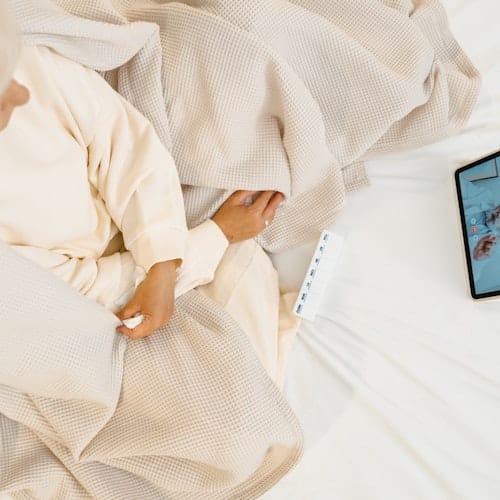11 Benefits of Remote Patient Monitoring

While the COVID-19 pandemic has brought many misfortunes, its outbreak sheds more light on the advantage of remote patient monitoring (RPM). Remote patient monitoring is expected to benefit patients and clinicians as the healthcare landscape changes.
Here are some of the key benefits of remote patient monitoring.
Frees Constrained Hospital Resources
Many health facilities in the United States and other nations have been under great strain due to the COVID-19 pandemic. The ability to remotely monitor patients’ health frees up the few resources for the most urgent cases because of personnel and bed shortages.
Enhances the Use of Data in Decision-Making
By enhancing doctors’ clinical understanding of patients’ conditions between office visits and providing them with tools to enhance proactive care delivery, remote patient monitoring helps practitioners.
With RPM, the healthcare professional may monitor a patient’s symptoms over time and spot patterns or adjust the patient’s care plan as necessary.
Aids in Patients’ Self-Care and Adherence to Care Plans
Remote patient monitoring benefits patients by giving them readily available, condition-specific, and user-friendly tools to manage their condition. This is true for various patient populations, including those experiencing one or more post-surgical recovery chronic comorbidities, COVID-19 infection, malignant neoplasms, maternal and child needs, and more.
Patient Data Are Available More Quickly
If you are wondering, “what is remote patient monitoring used for?”, then this point should come on top of your list: Linked health devices used with remote patient monitoring provide healthcare providers easy access to valid patient data.
These devices may include blood pressure cuffs, pulse oximeters, biometric sensors, implantable devices, and glucometers. Combined with remote patient monitoring solutions, these gadgets, and their data would hasten diagnosis and immediate treatment plan modification.
Better Patient Results
Patients who use remote patient monitoring systems may have a decreased chance of dying or readmission to the hospital in various medical use cases, such as implanted cardiac defibrillators.
Increases Net Patient Income
Virtually speaking, patient care is cheaper than the accompanying expenditures of brick and mortar facilities. A company implementing RPM may see a rise in net patient income due to more effective workflow processes, productive employees, and lower administrative costs. RPM also offers chances for compensation and competitive advantage.
Enhances Patient Access to Treatment
RPM reduces access barriers by delivering treatment to patients when and where they need it. It may link patients with specialists they would not otherwise have access to and reach patients in remote places. It’s a terrific approach to lessen scheduling conflicts as well.
Increases Patient Involvement
An excellent patient engagement technique, remote patient monitoring gives patients the tools they need to understand their health. A patient is more likely to have favorable health outcomes if they are aware of their disease, their specific treatment strategy, and what role they have in improving their health. Their participation is further increased by easy access to health education resources.
Improves Healthcare Staff Productivity and Addresses the Clinical Staff Deficit
Clinicians gain from remote patient monitoring by evaluating each patient and situation based on almost real-time patient status, enabling them to prioritize treatment delivery. Numerous RPM systems may interface with the provider’s EMR, minimizing redundant paperwork.
RPM allows health specialists to carry out some treatment procedures electronically, helping alleviate the load of excessively planned in-person visits in acute staffing deficiency. It uses a care paradigm centered on a team that gives providers some freedom.
Minimizes the Spread of Infectious Illnesses
The ability to avoid infectious diseases is another benefit of remote patient monitoring. Patients who use RPM can avoid going to a hospital or clinic, where they risk getting sick.
Avoiding an in-person visit reduces the chance of unnecessary exposure, which is especially important for the elderly, chronically ill, pregnant, and other immuno-compromised individuals.
Increases Caregiver Participation and Connectedness
Many RPM technologies now incorporate the patient’s caregiver in the treatment plan, giving them access to the patient’s vital sign data and progress. RPM allows the caregiver to participate in and impact the care and results for their loved ones. It offers the caregiver an additional layer of outside help.
The Bottom Line
There are many advantages to remote patient monitoring. RPM is an evident and consistent victory for patients, providers, caregivers, and payers across the sector.
